Last updated on 24 April 2025
Biogeochemistry in Asian mangroves
by Yuta Watanabe, Masahiro Shimotani, and Raekkhwan Poltanya
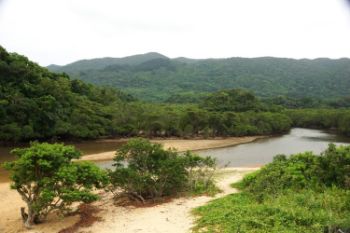
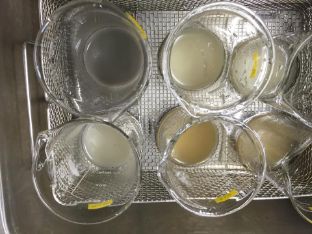
We have been working on Asian mangroves (currently Japan, Thailand, and the Philippines) since 2013 in cooperation with scientists of different backgrounds such as Ecosystem Ecology, Environmental Ecology, Hydrology, Bioeochemistry, and Radioisotpoe Geochemistry.
Despite the recognized organic carbon (OC) sequestration potential of mangrove forests, the ongoing climate change and anthropogenic disturbances pose a great threat to these ecosystems. However, we currently lack the ability to mechanically understand and predict the consequences of such impacts, primarily because mechanisms underlying OC stabilization in these ecosystems remain elusive. We aim to unravel the mechanisms of how mangrove OC can persist for the long term using ideas and techniques borrowed from soil science and marine geochemistry.
Selected publications
- Organo-metal coprecipitation contributes to stable organic carbon fraction in mangrove soil
- Functional organic matter components in mangrove soils revealed by density fractionation
- Organic carbon stock and composition in 3.5-m core mangrove soils (Trat, Thailand)
- Organic Carbon Stabilization Mechanisms in Mangrove Soils: A Review
- Molecular Composition and Decomposition Stages of Organic Matter in a Mangrove Mineral Soil with Time
Linking the molecular diversity of dissolved organic matter to its persistence and ecosystem functioning
by Ryu Sumioka and Reika Nishida
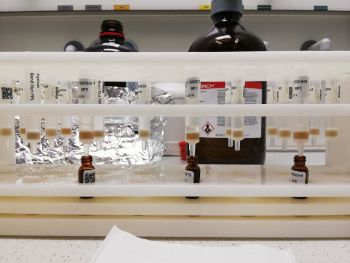
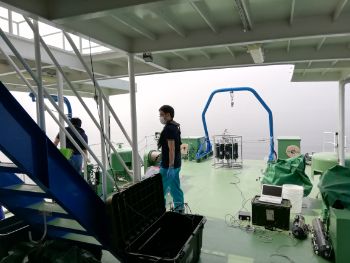
DOM is interesting because it is complex and each molecule has its structure and function. It seems a daunting task to fully understand its complexity if such is possible at all. Diversification of DOM is mediated by a complex interplay with microbes in water. It is now possible to study this close relationship between DOM and microbes through a combination of high-resolution techniques such as FT-ICR MS and metagenomics. We have been working on this theme in Lake Biwa, the largest lake in Japan, since 2022, in collaboration with aquatic organic geochemist Yasuhiko Yamaguchi and aquatic microbiologist Yusuke Okazaki.
Selected publications
- Couples in the deep: dissolved organic and microbial communities in the oxygenated hypolimnion of a deep freshwater lake
- Reframing natural organic matter research through compositional data analysis
Biogeochemistry in East Antarctica
by Morimaru Kida and Masahiro Shimotani

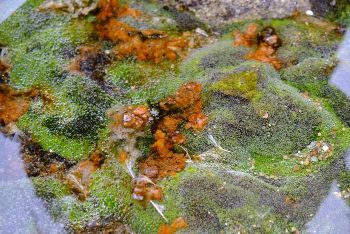
We study the fundamental drivers of the DOM molecular composition in lakes and streams on Sôya Coast (Lützow-Holm Bay, East Dronning Maud Land, East Antarctica). On Sôya Coast, hundreds of lakes exist with astonishingly diverse water chemistry, separated by impermeable bedrocks. For instance, electrical conductivity varies from almost zero to seven times that of seawater, and DOC concentration from < 0.5 mgC/L to 150 mgC/L. As there are no vascular plants present, DOM is originated dominantly from in-situ biological activity. This provides an excellent natural experimental field to study processes responsible for microbial-derived DOM transformations in inland waters.
This work was initiated at the 58th Japanese Antarctic Research Expedition (JARE58) in collaboration with the Bioscience Group of National Institute of Polar Research in Japan. Molecular-level analysis of the Antarctic DOM samples by FT-ICR MS was conducted as a post-doctoral work of Morimaru in Thorsten Dittmar’s ICBM-MPI Bridging Group for Marine Geochemistry, University of Oldenburg in Germany.
We also started analyzing the biotic and abiotic controls in the pedogenesis of Antarctic soils in 2024.
Selected publications
- Determinants of Microbial-Derived Dissolved Organic Matter Diversity in Antarctic Lakes
- Dissolved Organic Matter Processing in Pristine Antarctic Streams
- Origin, Distributions, and Environmental Significance of Ubiquitous Humic-like Fluorophores in Antarctic Lakes and Streams
- Ammonia Oxidation Potentials and Ammonia Oxidizers of Lichen–Moss Vegetated Soils at Two Ice-free Areas in East Antarctica
Drivers of soil organic carbon contents in global Andisols
by Morimaru Kida

Increasing evidence suggests that storage and persistence of SOC are controlled by the contents of reactive metal phases, such as organically complexed aluminum (Al) and iron (Fe) and short-range-order (SRO) minerals, in soil at local and regional scales. Yet the global significance of the metal-SOC relationship and the specific metal phases controlling SOC storage remain unclear due to the high variation in geological parent materials and rock-climate-SOC interactions. Andisol is the soil type developed from the most homogenous parent material (volcanoclastic materials), characterized by high contents of SOC and reactive metal phases, and thus ideal to examine the metal-SOC relationships that would develop during soil formation under varying environmental conditions. We have been working on the global synthesis of metal-SOC data in Andisols since 2021, in collaboration with Hirohiko Nagano and Rota Wagai and his group members.
Selected publications
Long-term black carbon dynamics post biochar amendment in a Japanese temperate secondary deciduous forest
by Maho Oshimoda and Lorena Goretti

Coming soon…